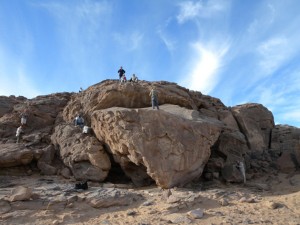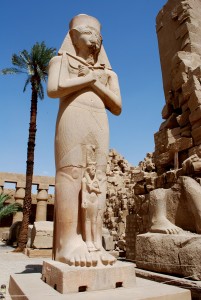A very warm welcome to the new edition of Egyptological.
After a rocky few months following the damage that professional hackers inflicted on Egyptological, we have moved the site to a new host and are very pleased to be back. This is our first new edition since April, so we are delighted to be able to introduce some new content in the Journal, Magazine and In Brief sections. Our new content covers the Predynastic, New Kingdom and Graeco-Roman periods, as well as delving into 19th Century A.D. collecting. It’s a good mix.
In the Journal, Janet Robinson has provided the second installment in her Vernacular Voices project, the first part of which was introduced on Egyptological on 31st May 2012. Her project to learn more about Egypt in the Roman era by reading inscriptions left by ordinary people has led her investigation of Roman use of the Eastern Desert and to find out more about the people who left their names there. In Vernacular Voices II: Ptolemaios, Phatres and Eireneis – Three Romano-Egyptians in Wadi Qash, she discusses unpublished graffiti signatures from a cave site in the Wadi Qash, and discusses the otherwise poor evidence for those travelling through or living in the wadi.
In The Origin and Early Development of the Smiting Scene, Francis Lankester, who specializes in the analysis of images from the Predynastic period, explores the development of the iconic image of the king striding forward, weapon held over his head, enemies underfoot. He begins with an analysis of early objects that may have been precursors of the Namer Palette. His analysis of the smiting scene on the Palette itself offers a new perspective on of what it represents. Dr Lankester then proceeds to look at later examples, following the development of the scene into the Old Kingdom before drawing together his conclusions about the early development of the classic scene.
In the Magazine, Dylan Bickerstaff continues his series on the Cross-Armed position adopted by kings of Egypt, mainly in the New Kingdom. The series began with Part 1 in the last edition. In The Significance of the Crossed-Arm Pose, Part 2: Osiris, The Osiris and the Osirides, he continues to question why the kings of Egypt chose to portray themselves in various crossed-arm poses. He examines to what extent depictions of Osiris influenced the portrayal of kings, taking various types of Osirian pose in turn, using a sample of 183 depictions of Osiris to analyse their different arrangements.
The second part of Marianne Brocklehurst and the West Park Museum by Andrea Byrnes concludes the two-part account of the travels of 19th Century visitor Marianne Brocklehurst along the Nile and the construction of the museum that she built to house the objects she collected. Where Part 1 looked at Marianne’s accounts of her travels and her collecting activities in Egypt with Mary Booth, Part 2 looks at her legacy: the West Park Museum in Macclesfield, and some of the objects on display there.
In In Brief, Barbara O’Neill has continued her Egyptologically Speaking series with a short interview with Christine Lilyquist, who retired only recently after a distinguished career at the Metropolitan Museum of Art in New York. Barbara’s interview focuses on Dr Lilyquist’s investigations into material culture.
We have reviews of two very different books: Wadi Sura: The Cave of Beasts, edited by Dr Rudolph Kuper (about the rock art of the Gilf Kebir in the Western Desert) and Ancient Egypt Investigated: 101 Important Questions and Intriguing Answers by Professor Thomas Schneider.
For those who were hoping to see the second part of Gary Beuk’s article about the life and career of Labib Habachi, we are glad to say that although Gary is going through the horrors of moving house with his family at the moment (we’ve all been there!), he is still fully committed to contributing Labib Habachi: A Life to Tell . . . Part 2, so we hope to have that in the next Magazine edition.
We very much hope that you enjoy this edition. Please note that there are still problems with images on some of the earlier articles on the site, and that is in hand. Apart from that, we have recovered well. Thanks to authors and readers for continuing to be part of the team.
If you would like to write for us, do get in touch. We are always pleased to hear from new authors, whether experienced or not.
All our very best
Andie Byrnes and Kate Phizackerley
contact@egyptologicalonline.net
www.facebook.com/groups/egyptological



 By Andrea
By Andrea